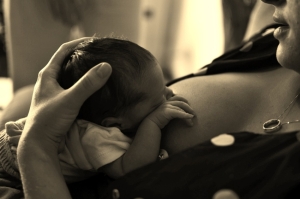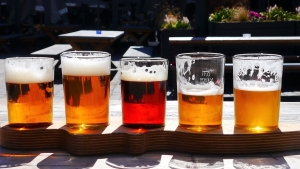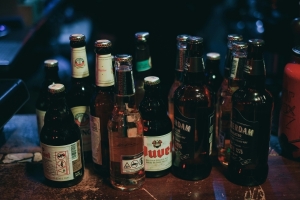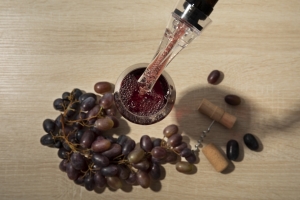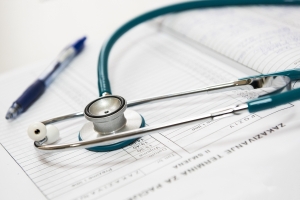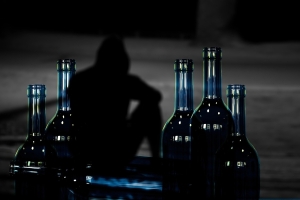cisa
Alcohol and Menopause: What Science Already Knows About This Relationship
Menopause is the stage in a woman's life marked by the natural end of menstruation and fertility, due to declining hormone levels, particularly estrogen. Recent scientific evidence suggests that alcohol consumption during this phase can interfere with symptoms such as hot flashes, mood, and mental health, as well as accelerate bone loss and increase cardiovascular risks like hypertension and arrhythmias. Alcohol may also affect the outcomes of hormone therapy, increasing the risk of complications such as breast cancer. Learn how alcohol can impact women’s health during menopause.
Effects of Alcohol on Menopausal Symptoms
Hot flashes (vasomotor symptoms):
Observational studies have shown mixed results—some associate alcohol consumption with more hot flashes, others find no clear relationship or even suggest fewer hot flashes with light to moderate consumption (1).
In a cohort study of over 4,000 premenopausal Korean women, those who consumed ≥20 g of alcohol per day (approximately 2 or more standard drinks) had a 1.7 to 2.2 times higher risk of developing moderate to severe hot flashes and night sweats compared to abstainers. The authors concluded that avoiding alcohol may help prevent vasomotor symptoms in women approaching the menopausal transition (1).
Mood and mental health:
Menopause is a period of increased vulnerability to mood changes and depression, and heavy alcohol consumption tends to worsen these symptoms. Excessive drinking is associated with worsening depression and anxiety, and menopausal women who drink heavily are 2 to 7 times more likely to develop depression compared to men with alcohol use disorder (2).
Turning to alcohol as a way to cope with stress or negative moods may increase during the menopausal transition, due to psychological symptoms and social stressors, reinforcing the need for caution and support for women who start drinking more to relieve emotional discomfort (3).
Sleep:
Alcohol consumption, especially in the evening, can impair sleep quality—a common issue during menopause. Studies show that alcohol reduces REM sleep and increases nighttime awakenings, exacerbating daytime fatigue and emotional distress (4).
Relationship Between Alcohol, Bone, and Cardiovascular Health During Menopause
Bone health:
Light to moderate alcohol consumption appears to have a neutral or even slightly beneficial effect on bone mineral density (BMD) in postmenopausal women. A 2022 meta-analysis (11 studies, ~47,000 participants) found that women who drank up to 1–2 alcoholic drinks per day had higher hip and spine BMD compared to abstainers (5).
However, excessive drinking has a clearly harmful effect: the same 2022 study found that with nearly 3 drinks per day, the risk of osteoporotic fractures increased sharply. Women consuming 3 drinks/day had about a 33% higher risk of hip fracture (and almost 59% higher with 4 drinks/day) compared to non-drinkers.
Still, these findings should be interpreted cautiously due to limitations like potential reverse causality, heterogeneity between studies (in terms of BMD measurement and alcohol consumption classification), and unmeasured confounders such as diet, physical activity, hormone therapy use, and smoking (5).
Cardiovascular health:
After menopause, women's cardiovascular risk increases due to the loss of estrogen’s protective effects. The role of alcohol in this context has been widely studied.
The current consensus from organizations like the American Heart Association (6) is that small amounts of alcohol do not pose cardiovascular risk, but higher doses quickly eliminate any benefit and increase the risk of hypertension, arrhythmias, stroke, and cardiomyopathy.
Impact of Alcohol on Hormone Therapy and Menopause Treatments
Hormonal metabolism and alcohol interact significantly after menopause. Alcohol is known to raise circulating levels of endogenous estrogens. Studies have shown that postmenopausal women who drink alcohol have higher estradiol levels due to increased peripheral aromatization and reduced estrogen breakdown in the liver (7).
This effect can amplify the action of hormone therapies used during menopause. In fact, a review found that alcohol consumption may increase estradiol concentrations in women undergoing estrogen replacement therapy.
This alcohol-induced hormonal increase raises concern, as it may reduce the effectiveness of anti-hormonal treatments (e.g., in breast cancer survivors taking aromatase inhibitors) and may heighten the risks associated with hormone therapy, such as breast câncer (8).
Even in women not on hormone therapy, regular alcohol consumption has been linked to increased breast cancer risk—possibly due to elevated estrogen levels and the production of carcinogenic metabolites (9).
Are There Guidelines for Alcohol Use Among Menopausal Women?
One recent and interesting finding: moderate alcohol consumption was associated with a slight delay in natural menopause. A 2021 prospective analysis found a weak but significant link between moderate alcohol intake (10–14.9 g/day), especially white wine, and a lower risk of early menopause (before age 45) (10).
Women in this category had about a 19% lower risk of early menopause compared to non-drinkers, though higher alcohol intake did not offer the same benefit.
The authors noted that similar results have been seen in other studies on menopausal age and alcohol, suggesting that low doses may influence hormones in a way that slightly delays ovarian depletion. While biologically intriguing, this is not a recommendation to drink—just another epidemiological data point in the complex relationship between alcohol and menopause.
Despite the potential health implications of alcohol during menopause, the topic is often overlooked in consultations with mature women—either due to assumptions of abstinence or lack of routine screening.
However, healthcare providers are advised not to assume abstinence in this population and to use screening tools, such as the AUDIT questionnaire, to identify risky drinking patterns.
Promoting open conversations about alcohol use, clearly informing what is considered moderate and safe consumption (maximum of 1 drink or 10 g of alcohol per day for women), and clarifying the thresholds for excessive use can support better health decisions and quality of life during menopause.
References:
- Kwon, R., Chang, Y., Kim, Y., Cho, Y., Choi, H. R., Lim, G.-Y., Kang, J., Kim, K.-H., Kim, H., Hong, Y. S., Park, J., Zhao, D., Rampal, S., Cho, J., Guallar, E., Park, H.-Y., & Ryu, S. (2022). Alcohol Consumption Patterns and Risk of Early-Onset Vasomotor Symptoms in Premenopausal Women.Nutrients, 14(11), 2276. https://doi.org/10.3390/nu14112276
- Peltier, M. R., Verplaetse, T. L., Roberts, W., Moore, K., Burke, C., Marotta, P. L., Phillips, S., Smith, P. H., & McKee, S. A. (2020). Changes in excessive alcohol use among older women across the menopausal transition: a longitudinal analysis of the Study of Women's Health Across the Nation. Biology of sex differences, 11(1), 37. https://doi.org/10.1186/s13293-020-00314-7
- Peltier, M. R., Verplaetse, T. L., Mineur, Y. S., Petrakis, I. L., Cosgrove, K. P., Picciotto, M. R., & McKee, S. A. (2019). Sex differences in stress-related alcohol use. Neurobiology of stress, 10, 100149. https://doi.org/10.1016/j.ynstr.2019.100149
- Roehrs, T., & Roth, T. (2001). Sleep, sleepiness, sleep disorders and alcohol use and abuse.Sleep medicine reviews, 5(4), 287–297. https://doi.org/10.1053/smrv.2001.0162
- Godos, J., Giampieri, F., Chisari, E., Micek, A., Paladino, N., Forbes-Hernández, T. Y., Quiles, J. L., Battino, M., La Vignera, S., Musumeci, G., & Grosso, G. (2022). Alcohol Consumption, Bone Mineral Density, and Risk of Osteoporotic Fractures: A Dose-Response Meta-Analysis. International journal of environmental research and public health, 19(3), 1515. https://doi.org/10.3390/ijerph19031515
- National Academies of Sciences, Engineering, and Medicine; Health and Medicine Division; Food and Nutrition Board; Committee on Review of Evidence on Alcohol and Health; Stone KB, Calonge BN, editors. Review of Evidence on Alcohol and Health. Washington (DC): National Academies Press (US); 2025 Apr 23. 6, Cardiovascular Disease.Available from: https://www.ncbi.nlm.nih.gov/books/NBK614695/#
- Erol, A., Ho, A. M., Winham, S. J., & Karpyak, V. M. (2019). Sex hormones in alcohol consumption: a systematic review of evidence. Addiction biology, 24(2), 157–169. https://doi.org/10.1111/adb.12589
- Mostofsky, E., Buring, J. E., Come, S. E., Tung, N. M., Zhang, C., & Mukamal, K. J. (2025). Effect of daily alcohol intake on sex hormone levels among postmenopausal breast cancer survivors on aromatase inhibitor therapy: a randomized controlled crossover pilot study. Breast cancer research : BCR, 27(1), 5. https://doi.org/10.1186/s13058-024-01940-4
- Bagnardi, V., Rota, M., Botteri, E., Tramacere, I., Islami, F., Fedirko, V., Scotti, L., Jenab, M., Turati, F., Pasquali, E., Pelucchi, C., Galeone, C., Bellocco, R., Negri, E., Corrao, G., Boffetta, P., & La Vecchia, C. (2015). Alcohol consumption and site-specific cancer risk: a comprehensive dose-response meta-analysis. British journal of cancer, 112(3), 580–593. https://doi.org/10.1038/bjc.2014.579
- Freeman, J. R., Whitcomb, B. W., Purdue-Smithe, A. C., Manson, J. E., Langton, C. R., Hankinson, S. E., Rosner, B. A., & Bertone-Johnson, E. R. (2021). Is Alcohol Consumption Associated With Risk of Early Menopause?. American journal of epidemiology, 190(12), 2612–2617. https://doi.org/10.1093/aje/kwab182
Alcohol and Breastfeeding
August 20, 2025Alcohol and Breastfeeding
Alcohol is a substance that easily crosses the placental barrier and, during the postpartum period, is transferred to breast milk in concentrations similar to those in the maternal bloodstream, reaching peak plasma–milk levels between 30 and 60 minutes after ingestion. During pregnancy, exposure to alcohol is linked to permanent malformations and long-term neurocognitive deficits. In the context of breastfeeding, high or frequent alcohol intake can reduce milk production and ejection, alter the infant’s sleep, and impair their growth and development.
During pregnancy, the American College of Obstetricians and Gynecologists (ACOG) has a categorical guideline: there is no safe amount of alcohol; total abstinence is recommended throughout all stages of pregnancy.
When it comes to breastfeeding, the guidelines vary in terms of permissiveness. In Brazil, the Brazilian Society of Pediatrics (SBP) adopts the precautionary principle and recommends zero alcohol consumption; however, an occasional drink is considered acceptable if the mother waits the necessary amount of time for the alcohol to be eliminated before nursing. The Ministry of Health supports this conservative stance: in addition to discouraging any frequent intake, it advises temporarily suspending breastfeeding if alcohol consumption is regular.
In the United States, both the Centers for Disease Control and Prevention (CDC) and the American Academy of Pediatrics (AAP) adopt a more controlled approach. They consider it safer to avoid alcohol but allow up to one standard drink per day (≈14 grams of alcohol — the U.S. standard), provided the mother waits at least two hours per drink before the next breastfeeding session. Consumption exceeding two drinks per day is discouraged, as it increases the risk of adverse effects on the baby.
For breastfeeding mothers who choose to drink alcohol, certain measures can reduce the risk of infant exposure: planning feedings or pumping before drinking; having pre-expressed milk available to cover the waiting period; strictly counting the number of drinks and respecting the minimum two-hour wait per drink; and ensuring that a sober caregiver handles tasks such as bathing, transportation, or bed-sharing while alcohol remains in effect.
In summary, pregnant women should maintain abstinence. Breastfeeding women, if following Brazilian guidelines, should avoid or strictly minimize alcohol consumption; if they choose to follow U.S. guidelines, they are limited to an occasional drink, with a minimum two-hour wait before breastfeeding. Any consumption beyond this threshold — especially binge drinking — requires temporary suspension of breastfeeding and consultation with a pediatrician to individualize care.
References:
Sociedade Brasileira de Pediatria. (2024). Guia prático de aleitamento materno. Guia prático de aleitamento materno (Atualização 2024). Rio de Janeiro, RJ: SBP.
American Academy of Pediatrics. (2022). Policy statement: Breastfeeding and the use of human milk. Pediatrics, 150(1), e2022057988. https://doi.org/10.1542/peds.2022-057988
American College of Obstetricians and Gynecologists. (n.d.). Tobacco, alcohol, drugs, and pregnancy. Recuperado em 1 de agosto de 2025, de https://www.acog.org/womens-health/faqs/tobacco-alcohol-drugs-and-pregnancy
Centers for Disease Control and Prevention. (2025, 26 fevereiro). Alcohol and breastfeeding. Recuperado de https://www.cdc.gov/breastfeeding-special-circumstances/hcp/vaccine-medication-drugs/alcohol.html
Ministério da Saúde. (2022). Amamentação e uso de medicamentos e outras substâncias (2ª ed.). Brasília, DF.
Estrogen and Alcohol Consumption in Women: Hormonal Interactions and Health Risks
Estrogen plays a key role in the neurobiological responses to alcohol in women. Recent evidence shows that hormonal fluctuations throughout the menstrual cycle and across a woman’s lifespan can influence alcohol sensitivity, drinking patterns, and the associated health risks.
Estrogen and the Brain’s Reward System
Preclinical and clinical studies indicate that estrogen amplifies dopamine effects in brain areas associated with the reward system, such as the striatum and prefrontal cortex. This may increase women's vulnerability to developing alcohol use disorders, especially during life phases with elevated estrogen levels—such as ovulation, pregnancy, or during hormone therapy.¹
1. Effect of Alcohol Use on Estradiol
Estradiol is a steroid hormone and a primary form of estrogen, produced mainly in the ovaries in women and in smaller amounts in the testes in men. Studies suggest that alcohol consumption can raise estradiol levels in women—a phenomenon observed in both reproductive-age and postmenopausal women.
Some research shows that women who consume one or more alcoholic drinks per day have higher estradiol levels than those who drink less, particularly when hormone levels are measured during the luteal phase of the menstrual cycle.² ³ Conversely, women with alcohol use disorder (AUD) who are undergoing treatment or are in early abstinence often present lower estradiol levels compared to women without AUD.⁴
2. Impact of Estradiol on Alcohol Use
High estradiol levels appear to increase women's vulnerability to alcohol use. The hormone affects brain regions involved in reward processing, such as the striatum and the nucleus accumbens.
A study by Martel et al. (2017), involving 22 reproductive-age women, found that higher estradiol levels were associated with greater alcohol consumption and more binge drinking episodes. This association was strongest when estradiol levels were high and progesterone levels were low—a hormonal pattern typical of the ovulatory phase of the menstrual cycle.⁵
Conclusion and Research Gaps
While current evidence highlights a significant interaction between estradiol levels and alcohol use in women, the underlying physiological mechanisms remain incompletely understood. Experimental and longitudinal studies are still needed to clarify how estradiol influences the neurobiology of reward and vulnerability to alcohol use, as well as how alcohol affects endocrine function across different stages of a woman’s life.
References:
- Handy, A. B., Greenfield, S. F., & Payne, L. A. (2025). Estrogen and alcohol use in women: a targeted literature review. Archives of women's mental health, 28(1), 81–93. https://doi.org/10.1007/s00737-024-01483-9biobehavioral reviews, 128, 648–660. https://doi.org/10.1016/j.neubiorev.2021.07.010
- Lucero J, Harlow BL, Barbieri RL, Sluss P, Cramer DW (2001) Early follicular phase hormone levels in relation to patterns of alcohol, tobacco, and coffee use. Fertil Steril 76(4):723–729. https://doi. org/10.1016/s0015-0282(01)02005-2
- Schliep KC, Zarek SM, Schisterman EF, Wactawski-Wende J, Trev- isan M, Sjaarda LA, Perkins NJ, Mumford SL (2015) Alcohol intake, reproductive hormones, and menstrual cycle function: a prospective cohort study. Am J Clin Nutr 102(4):933–942. https:// doi.org/10.3945/ajcn.114.102160
- Mühle C, Barry B, Weinland C, Kornhuber J, Lenz B (2019) Estrogen receptor 1 gene variants and estradiol activities in alcohol depen- dence. Prog Neuropsychopharmacol Biol Psychiatry 92:301–307. https://doi.org/10.1016/j.pnpbp.2019.01.008
- Martel MM, Eisenlohr-Moul T, Roberts B (2017) Interactive effects of ovarian steroid hormones on alcohol use and binge drinking across the menstrual cycle. J Abnorm Psychol 126(8):1104–1113. https://doi.org/10.1037/abn0000304
The Role of Non-Alcoholic Beer in Metabolism and Human Health
Have you ever wondered whether that non-alcoholic beer at the supermarket is actually good for you? While a recent German study raised concerns about sweeter non-alcoholic beers, the vast majority of global scientific research points to potential health benefits—when consumed alongside healthy habits—for gut health, blood sugar control, and even heart health.
Recent Research and Conflicting Results
Over the past few years, researchers from different countries have studied the effects of non-alcoholic beers on human health. The results remain mixed, indicating the need for more comprehensive studies.
Studies with Positive Results:
- Mexico (2020): Improved blood sugar control
- Portugal (2022): Healthier and more diverse gut microbiota
- Spain & USA: Cardiovascular benefits
- Multiple reviews: Protective effects when consumption is moderate
Study with Negative Results:
- Germany (2025): Reported worsened glucose, liver, and fat metabolism markers in people drinking non-alcoholic beer compared to water. The warning mainly applies to sweet beers mixed with soda.
Why the Conflicting Results?
The German Study That Sparked Debate
The German study tested 48 young men who consumed 660 ml per day (nearly 3 cans) of various non-alcoholic beers for four weeks. Researchers found that not all non-alcoholic beers are the same (1):
- Mixed beers (with lemon soda): Increased blood sugar
- Sweet wheat beers: Increased insulin and blood fats
- Traditional pilsners: Had more neutral effects
The main problem: These beers contained a lot of sugar and calories:
- Mixed beer: 752 calories in 660 ml (more than 2 hamburgers)
- Wheat beer: 706 calories + 24g sugar
- Pilsner: 733 calories + 18g sugar
Studies with Positive Findings
Mexican Study
A study with 35 participants showed that drinking one can (355 ml) of non-alcoholic beer daily for 30 days led to positive health effects (2):
- Lower fasting blood sugar
- Improved pancreas function (which produces insulin)
- Increased healthy gut bacteria
Portuguese Study
Portuguese researchers conducted a double-blind study (neither participants nor researchers knew who drank what) with 19 men. Result: both alcoholic and non-alcoholic beer improved gut bacteria diversity without causing weight gain or liver issues (3).
What Makes Non-Alcoholic Beer a Viable Alternative?
Non-alcoholic beers contain natural compounds that may offer health benefits:
- Polyphenols: Natural antioxidants from malt and hops that fight inflammation
- B vitamins: Important for energy and brain function
- Minerals: Such as potassium, magnesium, and phosphorus
- Amino acids: Protein building blocks
Benefits Observed in Studies
For the Heart and Circulation
Non-alcoholic beer may help the cardiovascular system in several ways:
- Reduces inflammation in the body
- May improve cholesterol levels in some people
- Provides antioxidants that protect blood vessels (4,5)
For Athletes and Active People
Studies show that non-alcoholic beer can be useful after workouts:
- Rehydrates better than alcoholic beer
- Provides carbohydrates to restore energy
- Contains electrolytes lost through sweat
- Aids muscle recovery due to antioxidants
Other Notable Benefits
- Better sleep: Hops compounds may have calming effects (7)
- Bone health: Especially helpful for postmenopausal women (5)
- Lactation: May stimulate breast milk production (5,6)
In addition to non-alcoholic beers, the Brazilian market also offers wines and spirits with reduced or zero alcohol, produced through different dealcoholization techniques such as reverse osmosis, osmotic distillation, nanofiltration, and extraction processes. Non-alcoholic wines can preserve traditional wine characteristics and retain beneficial compounds like antioxidants, while zero-alcohol spirits (like gin, whisky, vodka, and rum) go through more complex processes to maintain flavor and aroma.
According to Brazilian regulations, drinks with up to 0.5% alcohol are considered “non-alcoholic,” but they are not recommended for pregnant women, minors, people recovering from alcoholism, or those in abstinence. While they offer an appealing option for reducing alcohol intake while preserving social rituals, they tend to be less accessible due to higher production costs and should always be consumed as part of a balanced lifestyle.
Why Do Studies Reach Different Conclusions?
Factors That Influence Outcomes
- Amount consumed
- Positive studies: 330–355 ml/day (1 can)
- German study: 660 ml/day (almost 2 cans)
- Type of beer tested
- International studies: Traditional non-alcoholic beers
- German study: Included very sweet mixed beers
- Study duration
- Most: 30 days or more
- Some: Just 4 weeks (possibly too short)
- Participant profile
- Varied participants: Men and women of different ages
- German study: Only healthy young men
When Is Non-Alcoholic Beer NOT a Good Choice?
- Pregnant or breastfeeding women
- People recovering from alcoholism
- Those taking medications incompatible with alcohol
- People with liver conditions
Who Might Benefit from It?
- People who enjoy beer but want to avoid alcohol risks
- Athletes looking for post-workout recovery
- Healthy individuals without contraindications
- Anyone wanting to gradually reduce alcohol intake
How to Choose the Best Option
Look for:
- Lower sugar content (less than 5g per 100 ml)
- Fewer calories (no more than 150 per can)
- More natural ingredients (malt, hops, water, yeast)
- Fewer artificial additives
Avoid:
- Mixed beers with soda
- Very sweet versions
- Products with lots of preservatives
Limitations of Current Research
The differing results across studies highlight the need for further research to fully understand the effects of non-alcoholic beer on the human body. This is mainly due to the current limitations in available studies:
- Few studies focused on women (most are male-only)
- Long-term effects are still unknown
- Small sample sizes (usually fewer than 50 people)
- Different methods make comparison difficult
The Importance of Context
The potential benefits of non-alcoholic beer should be viewed as part of a healthy lifestyle overall:
- Balanced diet
- Regular exercise
- No smoking
- Moderate consumption of any beverage
Evidence-Based Practical Recommendations
For Daily Use:
- Moderation is key:
1 can per day (330 ml) seems to be safe and potentially beneficial - Water is always the best hydration option:
Non-alcoholic beer should not replace water - Consider the calories as part of your total diet
Use Wisely:
- As a post-workout alternative to sports drinks
- In social situations where you would normally drink alcohol
- As part of a strategy to reduce alcohol consumption
Conclusion
In summary, non-alcoholic beers can be a viable alternative—especially if you're looking for the potential benefits of beer without the risks of alcohol. Just be sure to choose lower-sugar options and consume them in moderation, as part of an overall balanced lifestyle.
References:
- Kreimeyer, H.; Sydor, S.; Buchholz, L.; et al. Non-Alcoholic Beer Influences Glucose and Lipid Metabolism and Changes Body Composition in Healthy, Young, Male Adults. Nutrients 2025, 17, 1625.
- Hernández-Quiroz, F.; Nirmalkar, K.; Villalobos-Flores, L.E.; et al. Influence of moderate beer consumption on human gut microbiota and its impact on fasting glucose and β-cell function. Alcohol 2020, 85, 77-94
- Marques, C.; Dinis, L.; Barreiros Mota, I.; et al. Impact of Beer and Nonalcoholic Beer Consumption on the Gut Microbiota: A Randomized, Double-Blind, Controlled Trial. J Agric Food Chem. 2022, 70(41), 13062-13070.
- Sancén, M.; Léniz, A.; Macarulla, M.T.; et al. Features of Non-Alcoholic Beer on Cardiovascular Biomarkers. Can It Be a Substitute for Conventional Beer? Nutrients. 2023, 15(1), 173.
- Trius-Soler, M.; Marhuenda-Muñoz, M.; Laveriano-Santos, E.P.; et al. Effects of the Non-Alcoholic Fraction of Beer on Abdominal Fat, Osteoporosis, and Body Hydration in Women. Nutrients. 2020, 12(9), 2684.
- Zhang, S.; Jin, S.; Zhang, C.; et al. Beer-gut microbiome alliance: a discussion of beer-mediated immunomodulation via the gut microbiome. Front Nutr. 2023, 10, 1186927.
- Franco, L., Sánchez, C., Bravo, R., Rodríguez, A. B., Barriga, C., Romero, E., & Cubero, J. (2012). The sedative effect of non-alcoholic beer in healthy female nurses. PloS one, 7(7), e37290. https://doi.org/10.1371/journal.pone.0037290
Global Study Links Alcohol to Increased Risk of Pancreatic Cancer
One of the largest studies ever conducted on the subject, involving over 2.4 million people worldwide, confirms that alcohol consumption increases the risk of developing pancreatic cancer. The research, which followed participants for more than 15 years, showed that even moderate amounts of alcohol can raise the chances of the disease, regardless of whether the person smokes or not.
The Study
An international study¹ published in the scientific journal PLOS Medicine analyzed data from over 2.4 million people across 30 countries to better understand the relationship between alcohol consumption and pancreatic cancer. Over the 15-year follow-up period, researchers recorded more than 10,000 cases of the disease. While the link between alcohol and pancreatitis — an important risk factor for pancreatic cancer — was already well established, direct evidence connecting alcohol and pancreatic cancer remained limited or inconclusive until now.
What the Study Found
The results showed that for each additional daily alcoholic drink (equivalent to about 10g of pure alcohol), the risk of pancreatic cancer increases by 3%. To put that in perspective, 10g of alcohol is roughly equivalent to:
- 1 small can of beer (269 ml)
- 1 small glass of wine (100 ml)
- 1 shot of spirits (30 ml of whisky, vodka, etc.)
For women: Consuming 1–2 drinks per day increases the risk of pancreatic cancer by 12% compared to those who drink very little.
For men: The risk rises by 15% for those who consume 2–4 drinks daily and jumps to 36% for those drinking more than 4 drinks per day.
Alcohol and Smoking: A Dangerous Combination—but Not the Only One
A key finding of the study is that alcohol increases the risk of pancreatic cancer even among people who have never smoked. This means it's not just the alcohol + tobacco combination that's dangerous—alcohol alone already poses a risk.
Researchers observed a similar increase in risk among:
- People who never smoked
- Former smokers
- Current smokers
Not All Alcoholic Beverages Are the Same
Another interesting finding was that different types of alcoholic drinks may have varying effects:
- Beer and spirits (such as whisky, vodka, cachaça): Were associated with an increased risk of pancreatic cancer.
- Wine: Showed no significant association, possibly due to beneficial compounds like polyphenols present in the drink.
Regional Differences
The study also revealed notable geographic differences. The increased risk was mainly observed in:
- Europe and Australia
- North America (including Brazil)
In contrast, no such association was found in Asian countries—likely because many people in those regions have a genetic variation that makes them less tolerant to alcohol, leading to lower consumption levels.
What This Means in Practice
Pancreatic cancer is one of the most aggressive forms of cancer, with low survival rates. Therefore, understanding its risk factors is essential for prevention.
Key takeaways:
- Even moderate alcohol consumption can increase risk
- The risk rises with higher amounts consumed
- Women appear more sensitive, with increased risk starting at 1–2 drinks per day
- For men, the risk becomes more evident from 2–3 drinks per day
Study Limitations
It’s important to note that the study had some limitations:
- It only assessed alcohol consumption at a single point in time, not over a lifetime
- It didn’t account for specific drinking patterns, such as weekend binge drinking
- It relied on self-reported alcohol intake, which may be underestimated
Conclusion
This research reveals that alcohol consumption—even in small amounts—is a modifiable risk factor for pancreatic cancer. Being aware of these risks is important, especially if you have other predisposing factors such as smoking, obesity, type 2 diabetes, chronic pancreatitis, or a family history of the disease.
References:
- Naudin S, Wang M, Dimou N, et al. Consumo de álcool e risco de câncer de pâncreas: Uma análise de 30 estudos prospectivos da Ásia, Austrália, Europa e América do Norte. PLoS Med. 2025;22(5):e1004590.
Hangover: Causes, Symptoms, and Scientific Updates
July 18, 2025Hangover: Causes, Symptoms, and Scientific Updates
Hangover is defined as the combination of physical and mental symptoms that occur after an episode of alcohol consumption, usually beginning when blood alcohol concentration (BAC) approaches zero. These symptoms include headache, nausea, fatigue, dizziness, light sensitivity, mood changes, irritability, and impaired concentration. It is estimated that 78% of social drinkers experience hangovers, and this rate can reach up to 90% among so-called heavy drinkers.¹
Pathophysiology of the Hangover
The hangover is a multifactorial condition. Acetaldehyde, the main metabolite of ethanol, is a highly toxic and inflammatory substance involved in the most intense hangover symptoms. Other contributing mechanisms include dehydration (due to alcohol’s diuretic effect), immune system changes, hypoglycemia, sleep disturbances, and gastrointestinal irritation.²
Recent evidence also shows the activation of inflammatory cytokines (such as IL-6 and TNF-α) during alcohol intoxication, which affects the central nervous system and contributes to symptoms like lethargy, pain, cognitive changes, and mood fluctuations—even after alcohol has been eliminated from the bloodstream.³
Type of Alcoholic Beverage and Congeners
Dark-colored drinks, such as whiskey, brandy, and red wine, contain higher concentrations of congeners—byproducts of the fermentation process such as methanol and acetone. Studies show that these substances are associated with greater severity and duration of hangover symptoms because they prolong the toxic effects of alcohol metabolism.⁴
However, it is important to highlight that the main determinant of a hangover is still the total amount of alcohol consumed. The intake of high doses of ethanol, regardless of the type of beverage, is directly related to the intensity of symptoms the next day. Thus, even drinks with low congener content can cause significant hangovers when consumed excessively.
Individual Vulnerability Factors
Susceptibility to hangovers varies between individuals. Genetic traits, such as variations in the activity of the ALDH2 enzyme (responsible for metabolizing acetaldehyde), directly influence the severity of symptoms. Other relevant factors include sex, age, nutritional status, mental health, and sleep patterns.
A recent 2025 study published in the Journal of Clinical Medicine investigated the relationship between frequency and intensity of hangovers, showing that individuals who report more frequent hangovers tend to experience more intense symptoms. This relationship remained significant even after controlling for variables such as amount of alcohol consumed, age, sex, and body mass index.⁵
These findings reinforce the fact that the idea of people developing "resistance" to hangovers through frequent drinking is a myth. Physiological responses such as inflammation, dehydration, and glucose drop still occur—even if the individual reports less discomfort. Normalizing the hangover as something “tolerable” may even mask risky drinking patterns.
Is There a Treatment?
Despite various popular approaches, there is no scientifically proven treatment to cure a hangover. Some substances such as antioxidants (e.g., N-acetylcysteine) or herbal extracts are under investigation,⁶,⁷ but there is still no robust evidence for clinical recommendation. Therefore, preventive measures remain the most effective:
- Avoid excessive alcohol consumption;
- Eat before and during drinking;
- Stay hydrated;
- Get adequate sleep after drinking.
In cases of severe or recurring hangovers, it is important to assess for patterns of risky use or signs of alcohol use disorder. In such cases, it is recommended to seek professional guidance from a physician or mental health specialist, who can assess the drinking pattern, provide appropriate support, and, if necessary, suggest harm-reduction strategies or refer for treatment.
References:
- Verster JC, Penning R. Alcohol hangover symptoms and their contribution to overall hangover severity. Alcohol Alcohol. 2010;45(6):603–612.
- Swift R, Davidson D. Alcohol hangover: mechanisms and mediators. Alcohol Health Res World. 1998;22(1):54–60.
- Penning R, van Nuland M, Olivier B, Verster JC. The pathology of alcohol hangover. Curr Drug Abuse Rev. 2010;3(2):68–75.
- Rohsenow DJ, Howland J, Arnedt JT, et al. Intoxication with bourbon versus vodka: effects on hangover, sleep, and next-day neurocognitive performance in young adults. Alcohol Clin Exp Res. 2010;34(3):509–518.
- Rîșniță S, Išerić E, Zijlstra MN, Stock AK, Verster JC. The Relationship Between Alcohol Hangover Frequency and Hangover Severity. J Clin Med. 2025;14(7):2428. https://doi.org/10.3390/jcm14072428
- Podobnik, B., Demšar, L., Šarc, L., Jerin, A., Osredkar, J., Trontelj, J., Roškar, R., & Brvar, M. (2024). N-Acetylcysteine Ineffective in Alleviating Hangover from Binge Drinking: A Clinical Study. Toxics, 12(8), 585. https://doi.org/10.3390/toxics12080585
- George, A., Udani, J. K., & Yusof, A. (2019). Effects of Phyllanthus amarus PHYLLPROTM leaves on hangover symptoms: a randomized, double-blind, placebo-controlled crossover study. Pharmaceutical biology, 57(1), 145–153. https://doi.org/10.1080/13880209.2019.1585460
Study Suggests Wine's "Matrix Effect" Enhances Polyphenol Benefits Beyond Isolated Alcohol
June 24, 2025Study Suggests Wine's "Matrix Effect" Enhances Polyphenol Benefits Beyond Isolated Alcohol
A recent scientific review proposes a paradigm shift in how wine and health are studied, advocating for a holistic approach that considers the "matrix effect" rather than focusing solely on isolated compounds. The study highlights how the interaction between polyphenols, alcohol, and other wine components can significantly influence both the bioavailability and biological effects of these compounds, raising questions about the effectiveness of supplements based on isolated ingredients or dealcoholized wine.
A Shift Toward the Matrix Effect
A review study¹ published in the International Journal of Molecular Sciences critically examined current methodologies in wine and health research and introduced the matrix effect concept—a complex interaction between various molecules within plant-based matrices that can trigger specific responses, often different from those observed with isolated constituents.
The study focused on three major polyphenols found in wine: tyrosol, hydroxytyrosol, and resveratrol, emphasizing how their lipophilic properties make them readily soluble in hydroalcoholic solutions, unlike most other polyphenolic compounds. This solubility difference is one reason for their higher bioavailability.
Key Findings on the Matrix Effect
The study demonstrates that wine has the most unique matrix among alcoholic beverages and can significantly impact the bioavailability of its phytocomplex formed during fermentation. The wine matrix plays a dual role: enhancing the absorption of beneficial compounds and inhibiting the carcinogenicity of alcohol metabolites.
The researchers identified at least thirteen polyphenols in wine as “potent inhibitors of pathways related to ethanol metabolism into acetaldehyde.” Additionally, three other polyphenols—epicatechin, epicatechin gallate, and epigallocatechin—were shown to attenuate acetaldehyde-induced double-strand DNA breaks by eliminating acetaldehyde.
Limitations of Alternative Products
The review provides evidence of the limitations of wine alternatives:
- Grape juice: Found ineffective as a matrix for quercetin and resveratrol absorption in both animals and humans. In contrast, adding 10% ethanol or whisky to the juice enabled effective absorption.
- Dealcoholized wine: Experiments in postmenopausal women yielded disappointing results, while regular red wine showed a reduced risk of cardiovascular disease.
- Red wine extracts (RWE): Showed inconsistent results in human studies, especially in terms of flow-mediated dilation (FMD) outcomes.
Implications and Recommendations
The findings suggest that ignoring the full wine matrix and focusing solely on isolated compounds (such as polyphenols) may lead to misleading conclusions—as is the case with dealcoholized wine or wine-based supplements. Alternatively, this narrow focus may also place undue emphasis on the toxic effects of a single component (alcohol), while overlooking the specific protective effects of other compounds (polyphenols) found in the same matrix.
Limitations and Considerations
- The holistic approach still requires more clinical trials for full validation;
- The specific nature of the wine matrix should be taken into account by public health authorities;
- The interaction among various matrix components demands further investigation;
- Consumption should always adhere to guidelines for moderate alcohol intake.
Conclusion
The study concludes that research on wine and health must move beyond classical molecular models toward concepts like the matrix effect and phytocomplexes. The wine matrix plays a crucial role in enhancing the bioavailability of beneficial compounds and/or inhibiting the carcinogenic effects of alcohol metabolites. This confirms the WHO Scientific Group’s recommendation to “investigate the potential protective effects of ingredients other than alcohol in alcoholic beverages.”
References:
- Miraldi E, Baini G, Biagi M, Cappellucci G, Giordano A, Vaccaro F, Bertelli AAE. Wine, Polyphenols, and the Matrix Effect: Is Alcohol Always the Same? Int J Mol Sci. 2024 Sep 10;25(18):9796. DOI: 10.3390/ijms25189796.
Half of Brazilian Adults Consume Alcohol — and 1 in 5 Admit to Overdrinking, According to Datafolha
June 24, 2025Half of Brazilian Adults Consume Alcohol — and 1 in 5 Admit to Overdrinking, According to Datafolha
A national survey reveals the profile of alcohol consumption in Brazil: half of adults drink, and nearly 1 in 5 admit to overindulging.
A survey conducted by the Datafolha Institute¹ in April 2025 revealed that 49% of Brazilians aged 18 and over regularly consume alcoholic beverages. The largest group (20%) reported drinking once or twice a week, while 3% said they drink almost daily. Another 13% said they drink less frequently, about once a month or less.
Men Still Drink More — and More Often
The survey showed that alcohol consumption is still more prevalent among men, with 58% of them reporting alcohol use, compared to 42% of women. Men also drink more frequently: 10% reported drinking three to seven days a week, compared to just 2% of women.
However, research shows that the number of women who drink has been increasing over the years. Data from the latest Alcohol and the Health of Brazilians report, based on Vigitel², showed that non-abusive alcohol use among women rose from 16.5% in 2010 to 22.8% in 2023, while abusive use went from 10.5% to 15.2% in the same period.
Age, Income, and Religion Influence Drinking Habits
Alcohol consumption is most prevalent among young adults aged 18 to 34, with 58% reporting drinking. This percentage decreases with age: it drops to 46% in the 45–59 age group and to 35% among those aged 60 and over.
Income also plays a role. Among those earning 5 to 10 times the minimum wage, 64% drink alcohol. In contrast, only 43% of those earning up to 2 minimum wages report drinking.
Religion is another influential factor: 27% of Evangelicals report consuming alcohol, compared to 58% of Catholics.
A 2023 survey by Ipec³, commissioned by CISA, showed similar findings: among 18–34-year-olds, only 25% abstain from drinking, while 23% drink weekly or every other week. Regarding religion, that study also found similar patterns, with 27% of Evangelicals and 50% of Catholics reporting alcohol use.
Underage Drinking Among Teenagers
The study also explored the behavior of 16- and 17-year-olds, analyzing this data separately. It found that 27% of teenagers in this age group already consume alcohol. This is concerning, as drinking at this stage of life can have harmful consequences for adolescent development.
How Much Are People Drinking?
Among regular drinkers, the average consumption was 4.5 drinks in the week prior to the survey. Each drink was counted as a glass, can, cup, or cocktail. Twenty-three percent of respondents said they consumed more than 6 drinks during that week.
Despite this, 81% of drinkers believe they drink in moderation, while only 18% admit to overdrinking—11% say they drink more than they should, and 7% say they drink far too much.
Decline in Consumption: Trend or Misperception?
When asked about their alcohol consumption over the past year, 53% said they had reduced their drinking, 35% said it had remained stable, and only 12% reported an increase.
However, the average consumption remains high: 4.5 drinks in the previous week, which may already indicate abusive use. Two key takeaways emerge:
- A significant portion of the population still consumes alcohol at harmful levels.
- There is a disconnect between how people perceive their own consumption and public health guidelines.
The Ipec³ survey supported this conclusion, finding that among heavy drinkers (estimated at 17% of the population at the time), 75% believed they were moderate drinkers, and only 13% recognized the need to change their habits.
These data reveal that a significant portion of people engage in harmful alcohol use without recognizing it as problematic, highlighting the urgent need for public policies to raise awareness about excessive drinking and its associated harms.
References:
- Instituto Datafolha. (2025, abril). Consumo de álcool no Brasil. Instituto Datafolha. https://media.folha.uol.com.br/datafolha/2025/05/05/dtfpncnsmbblcllca128242fasdfa.pdf
- Álcool e a Saúde dos Brasileiros: Panorama 2024 - CISA - Centro de Informações sobre Saúde e Álcool [Internet]. cisa.org.br. Disponível em: https://cisa.org.br/biblioteca/downloads/artigo/item/485-panorama2024
- Álcool e a Saúde dos Brasileiros: Panorama 2023 - CISA - Centro de Informações sobre Saúde e Álcool [Internet]. cisa.org.br. Disponível em: https://cisa.org.br/biblioteca/downloads/artigo/item/426-panorama2023
Are There Medications for the Treatment of Alcoholism?
June 24, 2025Are There Medications for the Treatment of Alcoholism?
In addition to psychosocial interventions, there are medications that also play an important role in reducing alcohol consumption and managing alcohol dependence. Below, learn about the main pharmacological options available—their functions, effectiveness, and the challenges of access in Brazil.
The Role of Medication in Treating Alcohol Use
Harmful alcohol use affects over 2 billion people and is responsible for nearly 6% of all deaths worldwide.¹ Similar to other chronic multifactorial diseases, the pathophysiology of alcoholism is approximately 50% genetic and 50% due to environmental factors.¹ Despite these alarming statistics, it’s important to highlight that alcoholism is both preventable and treatable.
Besides psychosocial interventions—such as individual and group psychotherapy—that play an extremely important role in treating alcohol dependence, there are medications that can assist in this process. These drugs help regulate the brain chemicals responsible for increasing the urge to drink, and they can also reduce anxiety or alleviate withdrawal symptoms when someone stops drinking, such as tremors, weakness, or hallucinations.
Pharmacological Treatment for Alcoholism
Currently, treatment is based on three main medications: disulfiram, naltrexone, and acamprosate, which are approved by the U.S. Food and Drug Administration (FDA).³ A recent review study demonstrated the efficacy of pharmacological treatment, even when compared to the significant effects of placebos.² The main drugs evaluated in the study were acamprosate, disulfiram, nalmefene, naltrexone (oral and injectable), baclofen, gabapentin, topiramate, and varenicline. The study showed that these medications—approved or recommended by international guidelines—help reduce both the frequency and intensity of alcohol use, as well as cravings. Although the effects are modest, the findings reinforce that their use can offer significant benefits, especially when combined with psychosocial support.
Disulfiram
Disulfiram⁴⁵ was one of the first medications approved by the FDA for the treatment of alcoholism. It inhibits the enzymes that break down alcohol into acetaldehyde. Inhibiting the enzyme acetaldehyde dehydrogenase leads to a buildup of acetaldehyde in the body, resulting in the disulfiram–ethanol reaction, characterized by severe nausea, vomiting, or even seizures. In other words, the medication is intended to create an aversive response to alcohol by producing unpleasant physical effects when alcohol is consumed shortly after taking the drug.⁵
Despite its proven efficacy and long history of use, disulfiram is currently not being marketed in Brazil, which limits its availability as a treatment option.
Naltrexone
Naltrexone⁴⁵ is used as an adjunct to psychosocial interventions in treating alcoholism. It works pharmacologically as an opioid receptor antagonist, reducing the pleasurable effects of alcohol, the desire to drink, and the feelings of euphoria associated with alcohol use. Alcohol indirectly stimulates the activity of endogenous opioids by promoting the release of peptides such as enkephalins and beta-endorphins. These peptides enhance dopamine activity in a brain region called the nucleus accumbens, mediating the rewarding effects of alcohol.
Another mechanism of naltrexone involves the inhibitory action of these endogenous peptides on GABAergic interneurons in the ventral tegmental area. These interneurons normally inhibit dopamine neurons. Therefore, opioid antagonists like naltrexone reduce alcohol consumption by blocking these receptors and interrupting the mesolimbic dopamine pathway.
Some studies suggest two types of drinkers may respond differently to treatment: “relief drinkers” and “reward drinkers.”⁶ Relief drinkers consume alcohol to relieve negative emotional states like anxiety, whereas reward drinkers are driven by alcohol’s pleasurable effects and have a strong craving for it.
Research has shown that reward drinkers tend to respond better to naltrexone.⁶ For example, in young adults, one study found that patients with high levels of both reward and relief motivation responded better to naltrexone treatment compared to placebo.⁷⁸
Note: Naltrexone is available in oral formulations in Brazil. The long-acting injectable form, which is common in some countries, is not commercially available in Brazil at this time, limiting its use in certain cases.
Acamprosate
Acamprosate⁴⁵ has also proven effective in treating alcohol dependence. It inhibits the brain’s excitatory glutamate activity, particularly by acting on NMDA receptors when these receptors become hyperactive. Acamprosate is considered a partial co-agonist of the NMDA receptor. Animal studies have shown that this medication reduces glutamate-induced calcium reuptake in neurons, suppresses conditioned responses to alcohol, reduces withdrawal effects, and inhibits glutamate-induced brain hyperexcitability and c-fos gene expression.⁵ There are also studies suggesting it acts on the GABAergic system, enhancing GABA reuptake in the thalamus and hypothalamus, which may help modulate dopaminergic activity in the nucleus accumbens and reduce the rewarding effects of alcohol.⁴
Challenges of Pharmacological Treatment in Brazil
Pharmacological treatment of alcoholism in Brazil faces significant challenges—particularly after disulfiram was discontinued by its manufacturer in 2019. Currently, naltrexone remains available by prescription and is provided free of charge in some municipalities, such as São Paulo. Acamprosate is not available on the national market. This limited availability can undermine treatment effectiveness—especially when combined approaches involving both medication and psychosocial support are not accessible. These circumstances highlight the urgent need for public policies to ensure the availability and accessibility of essential medications for fighting alcoholism.
It is also crucial to stress that pharmacological treatment should not occur in isolation. Its success depends heavily on the integration with psychotherapeutic approaches, such as Cognitive Behavioral Therapy (CBT).³ Furthermore, treatment options continue to evolve, and other drug combinations may be considered, particularly for addressing co-occurring conditions.
These medications should always be used under the guidance of a psychiatrist. The most appropriate treatment varies depending on each person's unique characteristics, drinking patterns, and any emotional, physical, or interpersonal issues resulting from alcohol use.
References:
- Fairbanks, Jeremiah, et al. "Evidence-based pharmacotherapies for alcohol use disorder: clinical pearls." Mayo Clinic Proceedings. Vol. 95. No. 9. Elsevier, 2020.
- Carvalho, Cainã Salmon Lima, Guilherme Soares Carvalho, and Nadine Cunha Costa. "Avanços no tratamento farmacológico do alcoolismo: revisão integrativa." Brazilian Journal of Development 7.1 (2021): 11271-11283.
- Agabio R, Lopez-Pelayo H, Bruguera P, Huang SY, Sardo S, Pecina M, et al. Efficacy of medications for the treatment of alcohol use disorder (AUD): A systematic review and meta-analysis considering baseline AUD severity. Pharmacological Research. 2024 Nov;209:107454.
- Santos, Samuel Mororó Pereira, and Leonardo Guimarães de Andrade. "FÁRMACOS PARA O TRATAMENTO DO ALCOOLISMO." Revista Ibero-Americana de Humanidades, Ciências e Educação 8.3 (2022): 558-567
- Castro, Luís André, and Danilo Antonio Baltieri. "Tratamento farmacológico da dependência do álcool." Brazilian Journal of Psychiatry 26 (2004): 43-46.
- Mann, Karl, et al. "Precision medicine in alcohol dependence: a controlled trial testing pharmacotherapy response among reward and relief drinking phenotypes." Neuropsychopharmacology 43.4 (2018): 891-899.
- Roos CR, Bold KW, Witkiewitz K, Leeman RF, DeMartini KS, Fucito LM, et al. Reward drinking and naltrexone treatment response among young adult heavy drinkers. Addiction. 2021
- Roos, Corey R., Karl Mann, and Katie Witkiewitz. "Reward and relief dimensions of temptation to drink: construct validity and role in predicting differential benefit from acamprosate and naltrexone." Addiction biology 22.6 (2017): 1528-1539.
Understanding Relapse in Alcohol Dependence
June 24, 2025Understanding Relapse in Alcohol Dependence
Relapse is a complex phenomenon and a significant challenge in the treatment of Alcohol Use Disorder (AUD). Despite advances in psychological and pharmacological treatments, a considerable portion of individuals return to drinking after a period of abstinence. Estimates indicate that up to 60–70% of people may relapse within the first six months after treatment.¹ Understanding what characterizes a relapse, which factors increase its risk, and how to prevent it is essential for promoting long-term recovery.
What is relapse—and how does it differ from a lapse?
Although often used interchangeably, relapse and lapse represent different situations in the recovery process. A lapse is an isolated episode of alcohol use that may occur during recovery but does not necessarily imply a return to previous patterns of problematic drinking. A relapse, on the other hand, is understood as a broader process involving a return to a sustained and problematic pattern of alcohol consumption.
Studies highlight that relapse should be analyzed both as a discrete event (e.g., any alcohol use after a period of abstinence) and as a more complex process influenced by multiple factors over time. This distinction is important, as not every lapse leads to a relapse—and recognizing this can help avoid feelings of failure that might discourage continuation of treatment.
Factors that increase the risk of relapse
Research points to specific factors that significantly raise the risk of relapse.¹ One such factor is anhedonia, or the inability to feel pleasure in daily activities. Individuals with high levels of anhedonia are more likely to return to drinking after treatment. Another important factor is smoking: people who continue smoking during treatment for AUD have a higher risk of relapse compared to former smokers or non-smokers.
Additionally, the amount of time a person has been abstinent before starting treatment plays a relevant role. People who had stopped drinking more recently before beginning treatment showed higher relapse rates over the following months.
A study that monitored individuals in real time using Ecological Momentary Assessment (EMA) found that everyday stress is a direct trigger for relapse.³ Participants who reported high stress levels were more likely to drink in the hours that followed, indicating that stress acts as an immediate trigger—not just a general risk factor. The research also observed that as stress increased throughout the day, so did the craving to drink, suggesting that alcohol may be used as a way to relieve momentary tension, which reinforces the risk of relapse.
Prevention: What works?
Relapse prevention involves strategies that address the aforementioned risk factors. Interventions that treat depressive symptoms (such as anhedonia), encourage smoking cessation, and strengthen coping skills in stressful situations are especially effective. Ongoing support after the end of formal treatment is also crucial, helping to identify early warning signs and prevent a lapse from progressing into a full relapse. Understanding relapse as a process—rather than simply a “failure”—allows professionals and patients to develop more realistic, empathetic, and personalized recovery plans.
Relapse in alcohol use disorder is a common and multifaceted phenomenon that can be prevented with evidence-based strategies. Understanding the difference between a lapse and a relapse, identifying risk factors such as anhedonia, smoking, and short prior abstinence, and offering continuous support are key steps to building a more solid recovery. Relapse does not mean the end of the road—with the right support, it’s possible to get back on track with confidence and self-awareness.
References:
- Nguyen, L. C., Durazzo, T. C., Dwyer, C. L., Rauch, A. A., Humphreys, K., Williams, L. M., & Padula, C. B. (2020). Predicting relapse after alcohol use disorder treatment in a high-risk cohort: The roles of anhedonia and smoking. Journal of psychiatric research, 126, 1–7. https://doi.org/10.1016/j.jpsychires.2020.04.003
- Reyes-Huerta, H. E., Vacio, Á., Pedroza, F., Salazar, M., & Martínez, K. (2018). The Recovery from Alcohol Consumption: Analysis of the Construct of Relapse. International journal of psychological research, 11(1), 70–82. https://doi.org/10.21500/20112084.3252
- Eddie, D., Barr, M., Njeim, L., & Emery, N. (2021). Mean Versus Variability: Disentangling Stress Effects on Alcohol Lapses Among Individuals in the First Year of Alcohol Use Disorder Recovery. Journal of studies on alcohol and drugs, 82(5), 623–628. https://doi.org/10.15288/jsad.2021.82.623



